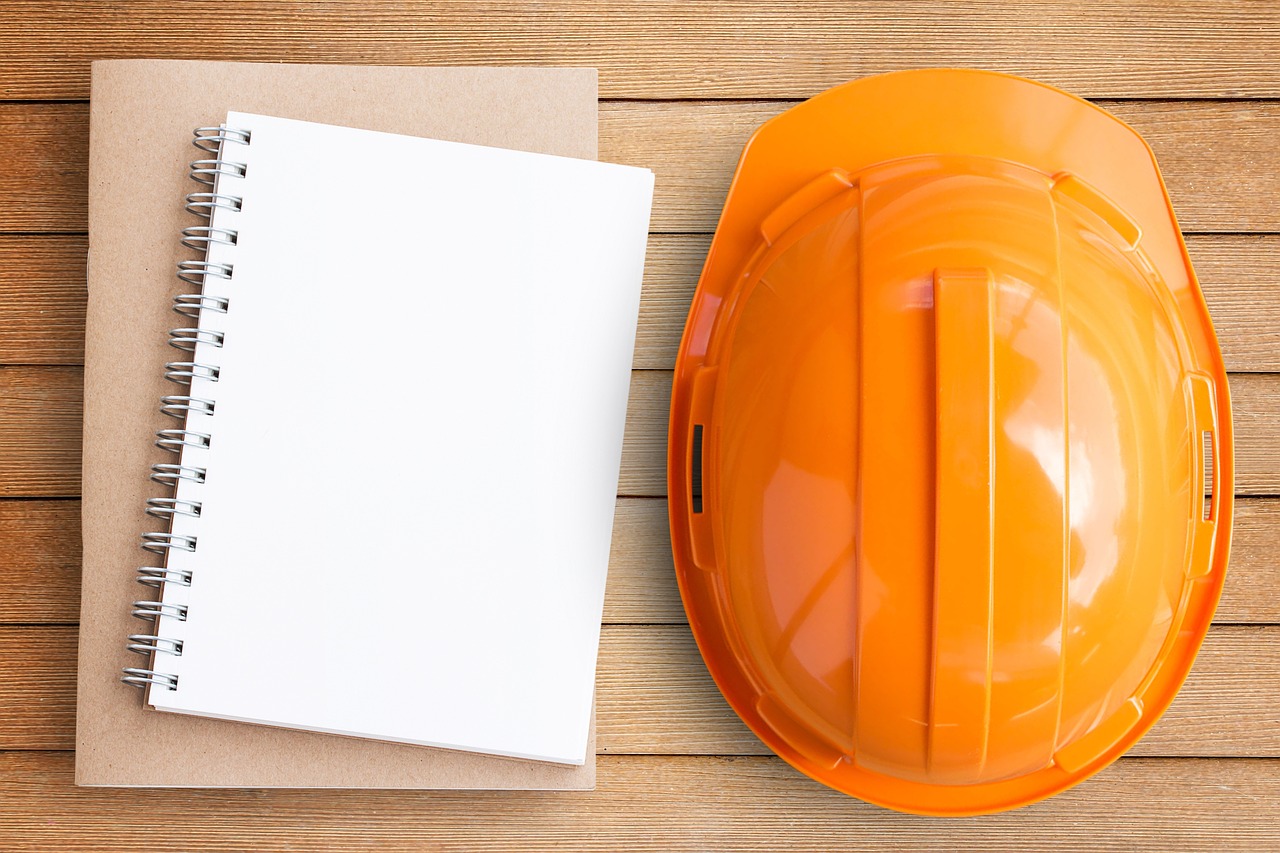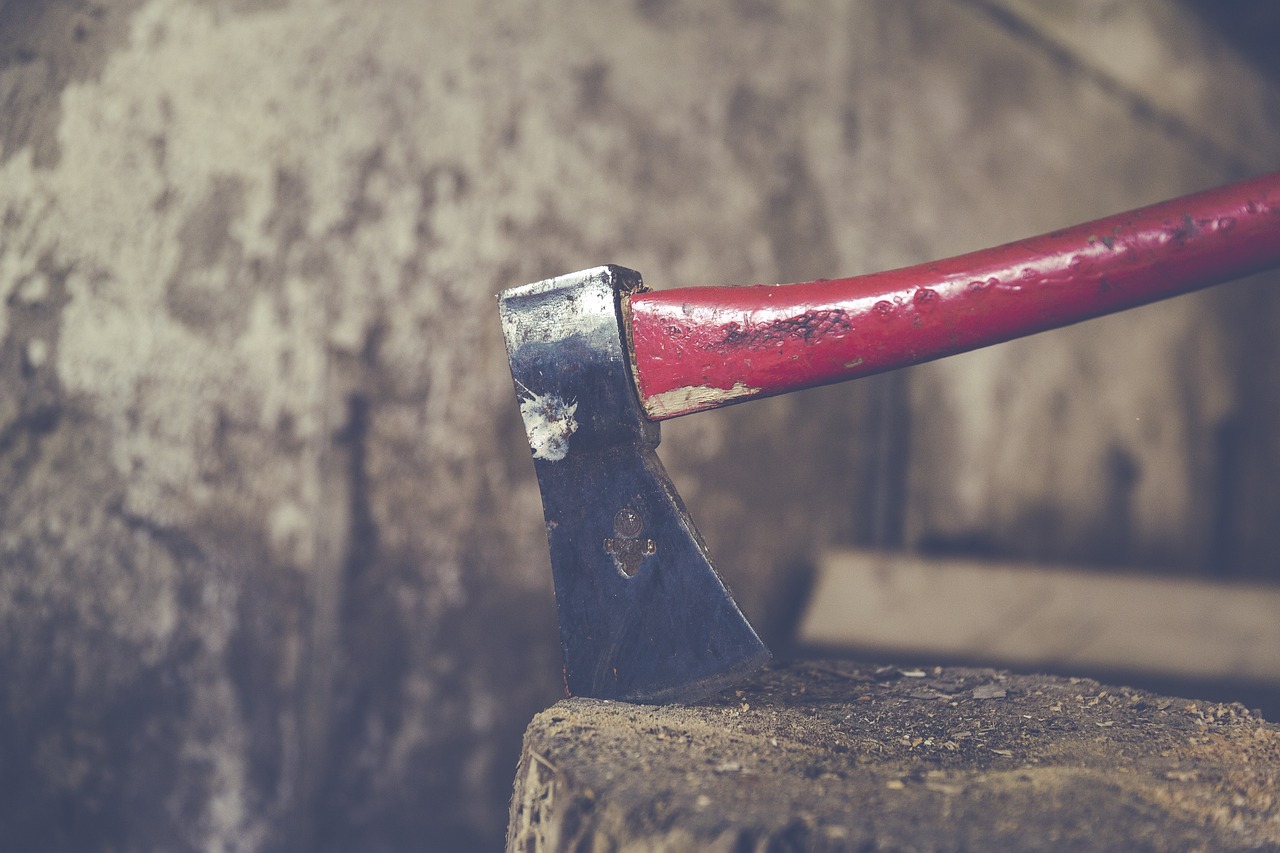Using a Wood Lathe: Safety and Basics
Welcome to the fascinating world of woodworking! Using a wood lathe can be an incredibly rewarding experience, whether you're a seasoned artisan or just starting your journey. This article explores essential safety measures and fundamental techniques for operating a wood lathe, ensuring a productive and secure woodworking experience for both beginners and experienced artisans. A wood lathe isn’t just a tool; it’s a gateway to creativity, allowing you to transform simple pieces of wood into stunning works of art. But before you dive into the swirling shavings and the sweet smell of freshly cut timber, it’s crucial to understand the basics of safety and operation. So, let’s get started!
A wood lathe is a versatile tool used for shaping wood into various forms. It operates by spinning the wood while a cutting tool is applied to shape it. Imagine the lathe as a potter's wheel, but instead of clay, you're working with wood. The main components of a wood lathe include the headstock, tailstock, bed, and tool rest. Each part plays a vital role in the lathe's functionality. When choosing a lathe, consider the type of projects you want to undertake, as there are various types available, including:
- Mini Lathes: Ideal for small projects and beginners.
- Full-Size Lathes: Suitable for larger projects and more advanced users.
- Variable Speed Lathes: Allow for adjusting speeds, enhancing versatility.
Understanding these components and types will help you select the right lathe for your woodworking needs, paving the way for successful projects.
Safety is paramount when using a wood lathe. Without proper precautions, the joy of woodworking can quickly turn into a hazardous situation. Before you even think about turning that first piece of wood, you need to ensure you're equipped with the right knowledge and tools to protect yourself. This section outlines critical precautions, including personal protective equipment and workspace organization, to prevent accidents and ensure a safe working environment.
Wearing appropriate PPE is vital for lathe safety. Think of it as your armor against the flying debris and noise that come with woodworking. Essential gear includes:
- Goggles: Protect your eyes from wood chips and dust.
- Dust Masks: Filter out harmful particles that can affect your lungs.
- Hearing Protection: Safeguard your ears from the loud noise of the lathe.
Every woodworker should prioritize these items to create a safer working environment, ensuring that your passion for woodworking doesn’t come with painful consequences.
Selecting the right goggles can significantly impact your safety. Not all goggles are created equal; some are designed for impact resistance, while others focus on dust protection. Look for goggles that provide a snug fit and offer side protection, as wood chips can come from various angles. Remember, your eyes are irreplaceable, so invest in a good pair!
Dust masks are crucial for respiratory protection while working with wood. The fine particles generated during lathe operation can lead to serious health issues over time. It’s essential to choose a mask that effectively filters out harmful dust. Look for masks with a high filtration rating, as they will protect you from the smallest particles that can sneak into your lungs.
A well-organized workspace enhances safety and efficiency. Imagine trying to cook in a cluttered kitchen; it’s chaotic and dangerous! The same principle applies to woodworking. Here are some best practices for arranging your tools, materials, and the lathe itself:
- Keep tools within arm's reach.
- Ensure the lathe is positioned in a well-lit area.
- Maintain a clear path around the lathe to prevent tripping.
By organizing your workspace, you not only minimize risks but also improve your workflow, allowing you to focus on creating beautiful pieces.
Understanding fundamental lathe techniques is essential for beginners. Just like learning to ride a bike, mastering the basics will give you the confidence to tackle more complex projects later on. This section introduces basic turning methods, tool handling, and tips for achieving smooth finishes on your wood projects.
Mastering turning techniques is key to successful woodwork. There are various methods, including spindle turning and faceplate turning. Spindle turning involves shaping the wood along its length, while faceplate turning is used for creating bowls and other round objects. Each method requires different tools and approaches, so experimenting with both will help you develop your skills and creativity.
Proper tool handling is crucial for safety and precision. Think of your lathe tools as extensions of your hands. Here are some practical tips on grip, angles, and movements:
- Maintain a firm grip on your tools.
- Hold tools at the correct angle to achieve a smooth cut.
- Move tools steadily and confidently to prevent accidents.
By following these tips, you’ll ensure effective use of lathe tools while minimizing the risk of accidents, allowing you to focus on creating rather than worrying about safety.
Q: What type of wood is best for beginners?
A: Softwoods like pine or cedar are great for beginners as they are easier to work with and less likely to cause tool damage.
Q: How often should I replace my lathe tools?
A: It depends on usage, but sharpening your tools regularly can prolong their life. Replace them when they become dull beyond sharpening.
Q: Can I use a wood lathe for materials other than wood?
A: While wood is the primary material, some lathes can handle plastics and soft metals. Always check your lathe's specifications.
By understanding these basics, you’ll be well on your way to becoming a proficient wood lathe operator. Remember, safety first, and let your creativity flow!

Understanding the Wood Lathe
A wood lathe is a versatile tool that plays a pivotal role in the world of woodworking. It allows artisans to shape and craft wood into stunning pieces of art or functional items. At its core, a lathe spins a piece of wood while a cutting tool is applied to it, enabling the creation of smooth, circular shapes. Imagine it as a potter’s wheel, but instead of clay, you’re working with wood. This fascinating tool can transform a simple block of wood into intricate designs, furniture parts, or even decorative bowls.
When diving into the world of wood lathes, it’s essential to understand the key components that make up this incredible machine. The main parts include:
- Headstock: This is where the motor is located and controls the speed at which the wood spins.
- Tailstock: Positioned opposite the headstock, it supports the other end of the wood, allowing for better stability.
- Bed: The sturdy base that holds everything in place, providing stability during operation.
- Tool Rest: A horizontal bar that supports the cutting tools while you work.
In addition to these components, wood lathes come in various types to cater to different woodworking needs. Here are some common types:
| Type of Lathe | Description |
|---|---|
| Spindle Lathe | Designed for turning long, cylindrical pieces such as table legs and spindles. |
| Faceplate Lathe | Used for larger, flat pieces like bowls and platters, secured with a faceplate. |
| Mini Lathe | A compact version ideal for small projects and limited spaces. |
Choosing the right lathe depends on your specific woodworking projects and the space you have available. Beginners might find a mini lathe more manageable, while seasoned woodworkers may opt for a spindle or faceplate lathe for more complex designs. Regardless of the type, understanding how your lathe works and the materials you'll be using will significantly enhance your woodworking experience.
As you embark on your woodworking journey, remember that mastering the wood lathe requires practice and patience. The beauty of working with wood lies not only in the final product but also in the process of creation. So, get comfortable, experiment with different techniques, and let your creativity flow!

Safety Precautions
When it comes to operating a wood lathe, safety should be your top priority. Whether you're a seasoned woodworker or just starting out, understanding and implementing safety precautions can mean the difference between a productive session and a trip to the emergency room. Imagine standing at your lathe, the wood spinning, the tools gliding smoothly—now imagine an accident. It’s a nightmare scenario that can be easily avoided with a little foresight.
First and foremost, always ensure that you are wearing appropriate Personal Protective Equipment (PPE). This includes items like goggles to protect your eyes from flying debris, dust masks to filter out harmful particles, and hearing protection to shield your ears from the loud noise generated by the lathe. Think of PPE as your first line of defense; without it, you're leaving yourself vulnerable to a host of potential injuries.
Let's dive deeper into the specifics of PPE. When selecting goggles, for instance, consider their fit and coverage. You want a pair that provides a snug fit around your eyes while offering ample protection from all angles. A good pair of goggles can be the difference between a minor inconvenience and a serious eye injury. Similarly, dust masks are essential for your respiratory health. Not all masks are created equal; make sure to choose one that is rated to filter out the fine dust particles that can be generated during lathe operation.
When it comes to goggles, you have a variety of options. Here’s a quick overview of some common types:
| Type | Features |
|---|---|
| Safety Glasses | Basic protection; good for low-risk tasks. |
| Goggles | Complete coverage; ideal for lathe work. |
| Face Shields | Extra protection for the face; use with goggles. |
Each type serves a different purpose, but for lathe work, goggles are typically your best bet. They protect against both impact and dust, keeping your vision clear and safe.
Now, let's talk about dust masks. When you're turning wood, fine particles can become airborne, and inhaling these can lead to serious health issues over time. A good dust mask is designed to filter out these harmful particles. Look for masks that are rated N95 or higher, as they offer the best protection against small dust particles. Remember, your lungs are just as important as your eyes!
Another critical aspect of safety is maintaining an organized workspace. A clutter-free area not only enhances your efficiency but also minimizes the risk of accidents. Always keep your tools within reach, but never within the path of the lathe. Ensure that the area around the lathe is free from obstructions, and make a habit of cleaning up any wood shavings or debris immediately after use. It’s akin to keeping a clean kitchen while cooking; a tidy environment helps prevent accidents.
Consider creating a designated area for your lathe and tools. This space should be well-lit and ventilated to ensure you can see what you're doing and breathe easily. You might want to use wall-mounted racks or pegboards to keep your tools organized and easily accessible. Not only does this make your workspace look professional, but it also ensures that you can grab what you need without fumbling around, which can lead to accidents.
In conclusion, taking the time to implement these safety precautions can significantly enhance your woodworking experience. By prioritizing PPE, maintaining a clean workspace, and being mindful of your surroundings, you can enjoy the art of woodturning without the looming threat of injury. Remember, safety is not just a set of rules; it’s a mindset that will serve you well throughout your woodworking journey.
- What type of goggles should I use while operating a wood lathe? It's best to use impact-resistant goggles that provide full coverage to protect against flying debris.
- Do I really need a dust mask? Yes, a dust mask is essential for protecting your respiratory health from fine wood particles.
- How can I keep my workspace organized? Use wall-mounted racks for tools and ensure that your lathe area is free from clutter to minimize accidents.

Personal Protective Equipment (PPE)
When it comes to woodworking, especially while using a wood lathe, safety should always be your top priority. One of the most effective ways to protect yourself is by wearing appropriate . This gear serves as your first line of defense against potential hazards that can arise during the lathe operation. Think of it as your superhero costume; without it, you’re just a regular person facing the dangers of flying wood chips, loud noises, and harmful dust particles.
Let’s break down the essential pieces of PPE every woodworker should consider:
- Safety Goggles: These are crucial for eye protection. Wood chips and debris can fly at high speeds, and without proper goggles, you could easily suffer from eye injuries.
- Dust Masks: Woodworking generates a lot of fine dust, which can be harmful to your lungs. A good dust mask filters out harmful particles, ensuring you breathe safely while you work.
- Hearing Protection: Lathes can be quite noisy, and prolonged exposure to loud sounds can lead to hearing loss. Earplugs or earmuffs are essential to protect your hearing.
By donning the right PPE, you not only enhance your safety but also boost your confidence as you work. Imagine trying to carve a beautiful bowl on your lathe while worrying about the safety of your eyes or lungs; that’s not a scenario anyone wants to face! So, gear up and make safety your number one priority.
Moreover, it’s essential to regularly check your PPE for any signs of wear and tear. Just like your favorite pair of sneakers, if your gear is worn out, it won’t provide the protection you need. Replace any damaged items immediately to ensure you’re always protected.
In addition to personal gear, consider your workspace environment. Ensure that it’s well-lit and organized, which can significantly reduce the chances of accidents. A clutter-free area allows you to focus on your project without distractions, making it easier to keep safety in mind.
In conclusion, investing in the right PPE is not just a recommendation; it’s a necessity for anyone serious about woodworking. The next time you approach your lathe, remember: your safety is in your hands—quite literally! So, suit up, stay safe, and let your creativity flow.
Here are some common questions you might have regarding Personal Protective Equipment (PPE) while using a wood lathe:
- What type of goggles should I use? Look for goggles that fit snugly and provide a wide field of vision. They should be impact-resistant to protect against flying debris.
- Are all dust masks effective? Not all masks filter out the same particles. Look for masks rated N95 or higher for adequate protection against wood dust.
- How often should I replace my PPE? Regularly check your equipment for wear and tear. Replace any items that show signs of damage or are no longer effective.

Choosing the Right Goggles
When it comes to operating a wood lathe, protecting your eyes should be at the top of your safety checklist. Woodworking can be a thrilling experience, but it also comes with its share of hazards, particularly flying debris and wood chips that can cause serious eye injuries. Choosing the right goggles is not just a matter of comfort; it’s about ensuring your vision remains intact while you unleash your creativity on that beautiful piece of wood.
There are several types of goggles available on the market, each designed to offer different levels of protection and comfort. Here’s a quick overview of the most common types:
| Type of Goggles | Description | Best For |
|---|---|---|
| Safety Glasses | Basic protection against flying particles. | General woodworking tasks. |
| Full-Face Shield | Covers the entire face, providing maximum protection. | High-risk operations involving large pieces. |
| Ventilated Goggles | Prevents fogging while offering solid protection. | Long-term projects in humid environments. |
When selecting goggles, consider the following factors:
- Fit: Ensure the goggles fit snugly against your face without any gaps. A proper fit not only enhances comfort but also prevents debris from entering.
- Lens Material: Look for polycarbonate lenses, as they are lightweight and impact-resistant, making them ideal for woodworking.
- Anti-Fog Coating: If you’re working in a warm environment or tend to sweat, choose goggles with an anti-fog coating to maintain clear visibility.
Remember, the goal is to find goggles that not only protect your eyes but also allow you to work comfortably for extended periods. It’s worth investing a little extra time and money into finding the right pair that suits your needs. After all, your eyes are your most valuable tools when it comes to crafting beautiful wood pieces!
Q: Can I wear regular glasses under my goggles?
A: Yes, but make sure the goggles are designed to fit over prescription glasses comfortably. Some models are specifically made to accommodate glasses.
Q: How often should I replace my goggles?
A: It's best to replace your goggles if they show signs of wear, such as scratches on the lenses, which can impair visibility.
Q: Are there goggles that can be used for other activities?
A: Absolutely! Many goggles are versatile enough for various activities, including cycling, skiing, and even some sports. Just ensure they meet the necessary safety standards for each activity.

Importance of Dust Masks
When working with a wood lathe, the importance of wearing a dust mask cannot be overstated. As you turn and shape wood, fine particles are released into the air, which can pose serious health risks if inhaled. Think of it this way: your lungs are like a sponge, soaking up everything they come into contact with. If you're not careful, you could be absorbing harmful dust that could lead to respiratory issues over time. So, why take that risk?
Dust masks act as a barrier between you and those harmful particles. They filter out the dust generated during the lathe operation, allowing you to breathe easier and focus on your craft. It’s not just about comfort; it’s about protecting your health. The right mask can significantly reduce your exposure to wood dust, which is known to cause conditions such as asthma, allergies, and even more severe respiratory diseases.
When selecting a dust mask, consider the following factors to ensure you’re getting the best protection:
- Filtration Efficiency: Look for masks that can filter out at least 95% of airborne particles.
- Fit and Comfort: A snug fit is crucial. If your mask doesn’t fit well, it won’t be effective.
- Type of Dust: Different masks are designed for different types of dust. Make sure to choose one that’s suitable for wood dust.
In addition to wearing a dust mask, it's also a good idea to maintain proper ventilation in your workspace. This can be achieved by using exhaust fans or opening windows to ensure that any airborne particles are quickly dispersed. Remember, a dust mask is your first line of defense, but a well-ventilated area is equally important for a safe woodworking experience.
Ultimately, investing in a quality dust mask is a small price to pay for your long-term health. Just like you wouldn’t drive a car without a seatbelt, you shouldn’t operate a wood lathe without proper respiratory protection. So gear up, stay safe, and let your creativity flow without the worry of harmful dust!
Q: Can I use a regular face mask instead of a dust mask?
A: While a regular face mask may offer some protection, it’s not designed to filter out fine wood dust effectively. It's best to use a mask that specifically states it can filter fine particles.
Q: How often should I replace my dust mask?
A: It depends on usage, but generally, if your mask becomes damp or visibly dirty, it’s time to replace it. Always check the manufacturer's guidelines for specific recommendations.
Q: Are there any dust masks that are more comfortable for long-term wear?
A: Yes! Look for masks with adjustable straps and breathable materials. Some models even come with exhalation valves to reduce heat and moisture buildup.

Workspace Organization
When it comes to using a wood lathe, the organization of your workspace is not just a matter of aesthetics; it's a crucial factor that can greatly enhance your safety and efficiency. Imagine trying to carve a beautiful piece of wood while tripping over scattered tools or searching for that elusive chisel. It's not just frustrating; it can lead to accidents that could easily be avoided with a little planning. So, how do you create an organized workspace that promotes productivity and safety?
First and foremost, you need to establish a designated area for your lathe. This space should be well-lit and spacious enough to allow for movement without feeling cramped. Ensure that your lathe is positioned at a comfortable height, as this will help you maintain a good posture and reduce fatigue during long hours of work. Additionally, consider the layout of your tools and materials. Keeping frequently used items within arm's reach can save you time and minimize distractions.
Next, think about the arrangement of your tools. A cluttered bench can quickly become a hazardous environment. Use pegboards, shelves, or toolboxes to store your tools neatly. Labeling drawers and containers can also help you find what you need without rummaging through a pile of equipment. For instance, you might have a dedicated drawer for chisels, another for sanding tools, and so on. This not only speeds up your workflow but also helps prevent accidents caused by misplaced tools.
Furthermore, it's essential to keep your workspace clean and free of debris. Wood shavings and dust can accumulate quickly, creating a slippery surface that poses a risk for slips and falls. Regularly sweeping or vacuuming your area will not only keep it tidy but also improve your overall health by reducing the inhalation of harmful particles. You might even consider investing in a dust collection system to keep your environment as clean as possible.
Lastly, don't forget about the importance of having a first aid kit readily available. Accidents can happen even in the safest of environments, so being prepared is key. Place a first aid kit in an easily accessible location, and ensure that you know how to use the items within it. This simple step can make a significant difference in the event of an injury.
In summary, a well-organized workspace is essential for anyone using a wood lathe. By creating a designated area, arranging your tools thoughtfully, maintaining cleanliness, and being prepared for emergencies, you can significantly enhance your safety and productivity. Remember, a little effort in organizing your workspace can lead to a more enjoyable and successful woodworking experience!
- What is the best way to organize tools around a wood lathe? Keeping frequently used tools within arm's reach and using labeled storage can help maintain an organized workspace.
- How often should I clean my workspace? It's best to clean your workspace regularly, ideally after each project, to prevent debris buildup and maintain safety.
- Should I invest in a dust collection system? Yes, a dust collection system can significantly improve air quality and cleanliness in your workspace, making it safer to work.
- What should I include in my first aid kit? A basic first aid kit should include bandages, antiseptic wipes, gauze, adhesive tape, and scissors.

Basic Wood Lathe Techniques
When it comes to woodturning, mastering the basic techniques is like learning the ABCs of woodworking. Whether you're a novice just getting your feet wet or an experienced artisan looking to refine your skills, understanding these foundational methods is essential. The wood lathe is an incredible tool that allows you to transform a simple block of wood into stunning pieces of art, furniture, or functional items. But how do you get started? Let’s dive into some of the fundamental techniques that will set you on the right path.
One of the first techniques you’ll encounter is spindle turning. This method involves rotating the wood along its axis to create cylindrical shapes, such as table legs or spindles for chairs. Imagine the lathe as a potter’s wheel, but instead of clay, you’re working with wood. As the wood spins, you’ll use various tools to carve and shape it into your desired form. It’s a dance of precision and creativity, where every movement counts. To get the most out of spindle turning, it’s important to keep your tools sharp and your hands steady.
On the other hand, we have faceplate turning, which is perfect for creating larger, more intricate pieces like bowls or platters. In this technique, the wood is mounted onto a faceplate that attaches to the lathe. As the wood spins, you’ll remove material from the face of the piece, allowing you to create a hollowed-out design. Picture it like carving a pumpkin; you start with a solid block and gradually scoop out the insides to reveal a beautiful shape. Faceplate turning requires a different set of tools and techniques, but once you get the hang of it, the possibilities are endless.
To help you visualize these techniques, here’s a simple comparison:
| Technique | Description | Best For |
|---|---|---|
| Spindle Turning | Shapes wood along its length | Table legs, spindles |
| Faceplate Turning | Shapes wood from the face | Bowls, platters |
Now, let’s talk about tool handling. Proper technique is crucial not only for achieving the best results but also for ensuring your safety while working. The way you grip your tools can make a significant difference in your control and precision. A good rule of thumb is to hold your tools with a firm but relaxed grip, allowing for fluid movement as you work. Think of it like holding a paintbrush; you want enough control to guide it, but not so tight that you lose the ability to make fine adjustments.
As you’re working on your lathe, always remember to maintain the correct angle with your tools. This is where the magic happens! The angle can affect how the tool cuts into the wood, so it’s essential to experiment and find what works best for you. Don’t be afraid to adjust your stance and position as you work; sometimes, a slight shift can provide you with better leverage and control.
In addition to grip and angle, pay attention to your movements. Smooth, steady motions will yield the best results. Rushing can lead to mistakes or accidents, so take your time and enjoy the process. Woodturning is as much about the journey as it is about the final product. As you become more comfortable with these techniques, you’ll find your own rhythm and style, allowing your creativity to shine through.
- What is the best wood for beginners to use on a lathe? Softwoods like pine or cedar are great for beginners due to their ease of cutting and shaping.
- How do I know when my lathe tools need sharpening? If you notice the tools are tearing the wood or not cutting smoothly, it’s time to sharpen them.
- Can I use a wood lathe for other materials? While wood is the primary material, some lathes can handle plastics and soft metals, but always check your lathe's specifications.

Turning Techniques
Mastering turning techniques is not just about knowing how to operate a wood lathe; it’s about embracing the art of transforming raw wood into stunning creations. Whether you’re a novice or a seasoned woodworker, understanding the different methods of turning can significantly enhance your craftsmanship and creativity. Let's dive into the two primary types of turning: spindle turning and faceplate turning.
Spindle turning is typically used for creating long, cylindrical shapes such as table legs, chair spindles, and other similar items. In this technique, the wood is secured between two points, allowing it to rotate while you shape it with your tools. The key to successful spindle turning lies in your ability to maintain a steady hand and a consistent speed. It’s almost like dancing with the wood; you need to find the rhythm that works for you. You'll often use tools like spindle gouges and parting tools to achieve the desired profile.
On the other hand, faceplate turning is ideal for creating broader, flatter objects such as bowls or platters. Here, the wood is attached to a faceplate that is mounted on the lathe. This technique allows for more freedom in design, but it also requires a keen understanding of how to balance the wood as it spins. Think of it as sculpting a masterpiece; you have to chip away at the material, gradually revealing the form hidden within. For this method, you will typically use tools like bowl gouges and scrapers to refine your work.
Both techniques require patience and practice, but they also offer a fantastic opportunity to express your creativity. As you become more proficient, you can experiment with different designs and styles, pushing the boundaries of what you can create. One of the best ways to improve your skills is to watch experienced woodturners in action—there’s nothing quite like seeing the magic unfold in real-time!
To help you get started, here’s a quick comparison of spindle turning and faceplate turning:
| Feature | Spindle Turning | Faceplate Turning |
|---|---|---|
| Primary Use | Cylindrical shapes (e.g., legs, spindles) | Flat or hollow forms (e.g., bowls, platters) |
| Tool Types | Spindle gouges, parting tools | Bowl gouges, scrapers |
| Wood Orientation | Secured between centers | Mounted on a faceplate |
| Skill Focus | Steady hand, speed control | Balance, sculpting technique |
As you explore these turning techniques, remember that practice makes perfect. Don't be afraid to make mistakes; each misstep is a stepping stone toward mastery. Embrace the learning process, and soon enough, you’ll be crafting beautiful wooden pieces that reflect your unique style and skill.
- What is the best wood for beginners to practice turning? Softwoods like pine or poplar are great for beginners due to their ease of shaping and forgiving nature.
- How do I know what speed to set my lathe? Start at a lower speed and gradually increase it as you become more comfortable with the wood and your tools.
- Can I use a regular chisel on a wood lathe? No, it’s best to use specific lathe tools designed for the task to ensure safety and precision.
- What should I do if the wood catches on the tool? Immediately stop the lathe and assess the situation. Adjust your grip and angle, and try again at a slower speed.

Tool Handling Tips
When it comes to using a wood lathe, mastering tool handling is not just about technique; it’s about ensuring your safety and achieving the best results. Think of your lathe tools like a musician's instruments. Just as a musician must learn to handle their instrument with care and precision, you too must develop a good grip and control over your lathe tools. The first step in effective tool handling is understanding the correct grip. You should hold your tools firmly but not so tightly that it causes fatigue. A relaxed grip allows for better control and reduces the risk of slipping, which can lead to accidents.
Next, consider the angle at which you approach the wood. The angle can significantly affect the outcome of your work. For example, when turning, you generally want to present the tool to the wood at a slight angle rather than straight on. This technique helps in achieving a smoother cut and reduces the chances of the tool catching on the wood, which can be dangerous. Remember, the goal is to have the tool glide through the wood as if it were a hot knife through butter!
Another important aspect is your body positioning. Stand with your feet shoulder-width apart for stability, and make sure you are positioned comfortably in front of the lathe. This position allows you to maintain control while also being able to move your body as needed to guide the tool. If you find yourself leaning or stretching too much, it might be time to adjust your stance or the position of the lathe itself.
Lastly, always be mindful of the direction of the cut. When you’re working with the lathe, it’s crucial to know which way the wood is turning. Always cut in the direction that the wood is moving away from the tool. This practice not only enhances your control but also minimizes the risk of the tool snagging, which can lead to serious injuries. A good rule of thumb is to keep your tools sharp; dull tools are more likely to slip and cause accidents.
In summary, effective tool handling is a combination of proper grip, angle, body positioning, and understanding the direction of your cuts. By incorporating these tips into your routine, you will not only enhance your woodworking skills but also create a safer working environment for yourself. Remember, practice makes perfect, so take your time to develop these skills!
- What is the best way to grip a lathe tool?
The best way to grip a lathe tool is firmly but relaxed, allowing for control without causing fatigue. - How important is tool angle when turning wood?
The angle is crucial as it affects the smoothness of the cut and helps prevent the tool from catching. - What should I do if I feel uncomfortable while using the lathe?
Adjust your position or the lathe setup to ensure you are comfortable and stable while working. - Why is it important to keep tools sharp?
Sharp tools provide better control and reduce the risk of slipping, making your work safer and more efficient.
Frequently Asked Questions
- What is a wood lathe used for?
A wood lathe is primarily used for shaping and turning wood into various forms and designs. It allows woodworkers to create everything from simple cylindrical shapes to intricate decorative pieces, making it an essential tool for anyone looking to explore woodworking.
- What safety gear should I wear when using a wood lathe?
When operating a wood lathe, it's crucial to wear personal protective equipment (PPE) such as safety goggles to protect your eyes from flying debris, a dust mask to filter out harmful wood particles, and hearing protection to guard against loud noises. This gear is vital for ensuring your safety while working.
- How do I choose the right wood lathe for my projects?
Choosing the right wood lathe depends on several factors, including your skill level, the type of projects you plan to undertake, and your budget. Beginners might start with a smaller, more affordable lathe, while experienced woodworkers may prefer larger models with more features for advanced projects.
- What are some basic turning techniques I should learn?
Some fundamental turning techniques include spindle turning, where you create cylindrical shapes, and faceplate turning, which is used for making bowls and platters. Mastering these techniques will help you develop your skills and broaden your woodworking capabilities.
- How can I improve my tool handling skills on the lathe?
Improving your tool handling skills involves practicing proper grip, maintaining the correct angles, and using smooth, controlled movements. Regular practice will help you gain confidence and precision, reducing the risk of accidents while enhancing the quality of your work.
- Why is workspace organization important when using a lathe?
A well-organized workspace minimizes risks and enhances efficiency. By keeping tools and materials neatly arranged, you can easily access what you need without distractions, which helps maintain focus and reduces the likelihood of accidents.
- What types of goggles are best for lathe work?
The best goggles for lathe work should fit snugly and provide a clear view while protecting your eyes from wood chips and debris. Look for goggles that are impact-resistant and have anti-fog features to ensure visibility during your projects.
- Do I really need a dust mask when working with wood?
Yes, wearing a dust mask is essential when working with wood, especially during lathe operations that generate fine dust particles. A good dust mask filters out harmful particles, protecting your lungs and overall health while you enjoy your woodworking activities.



















